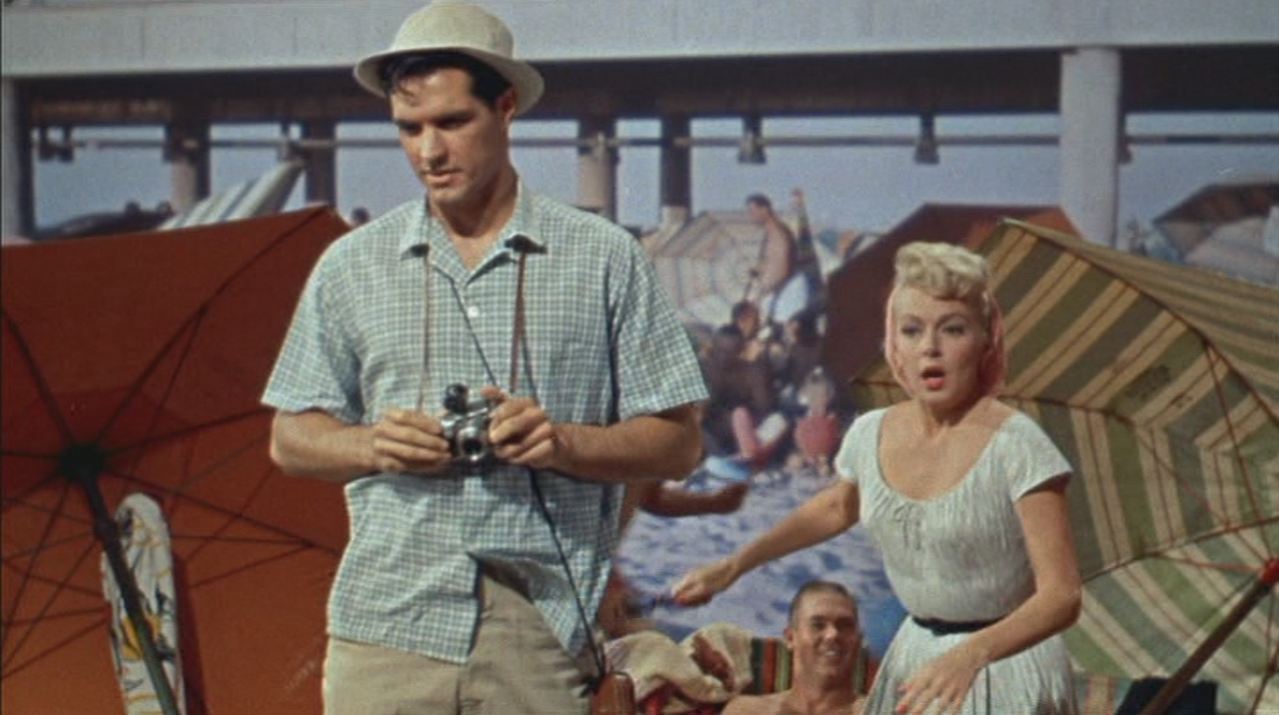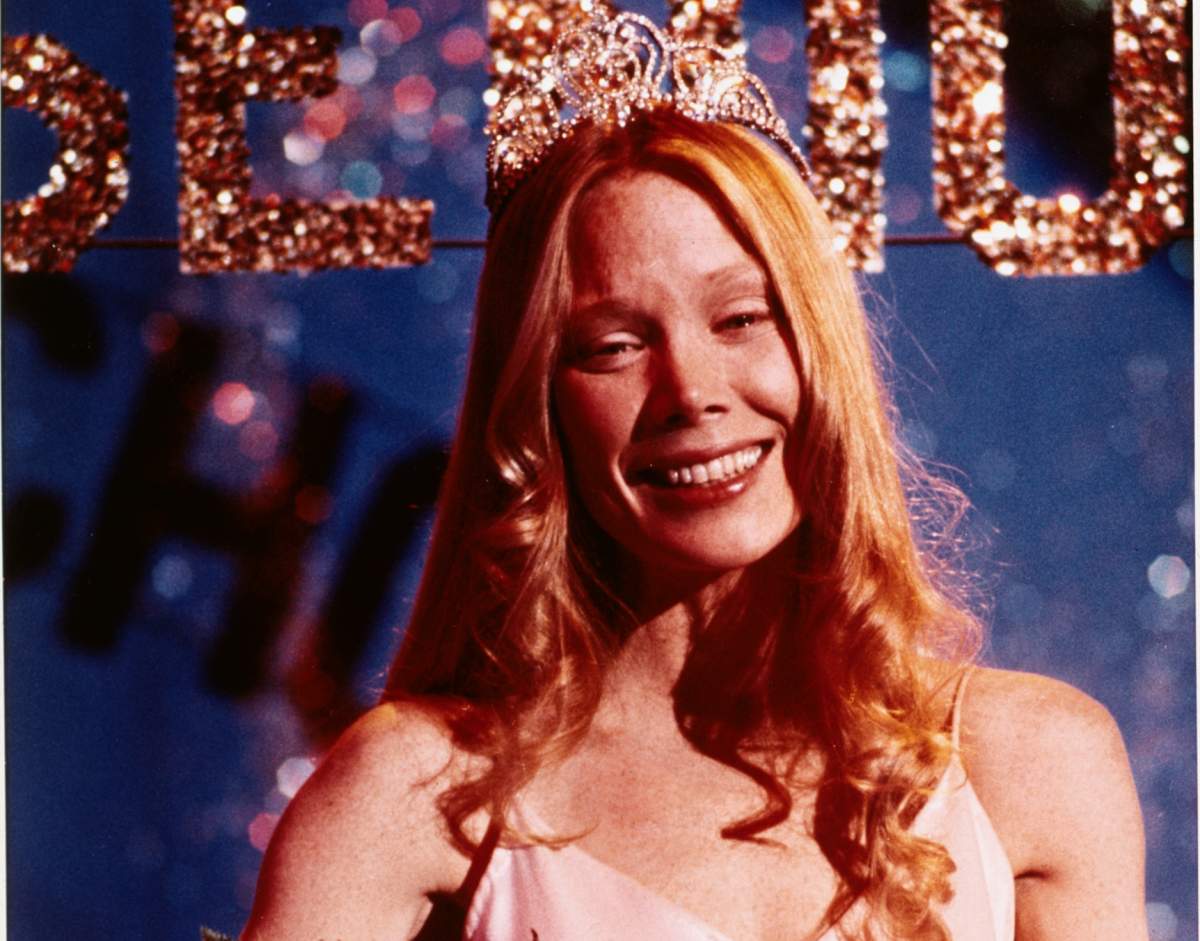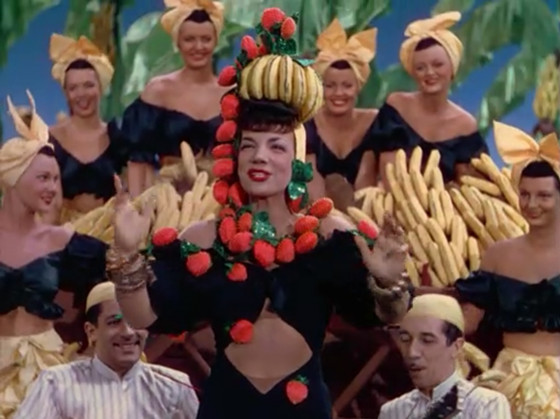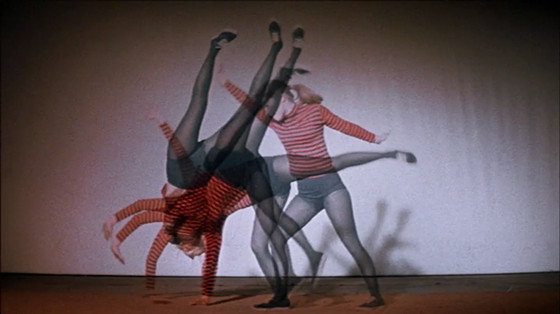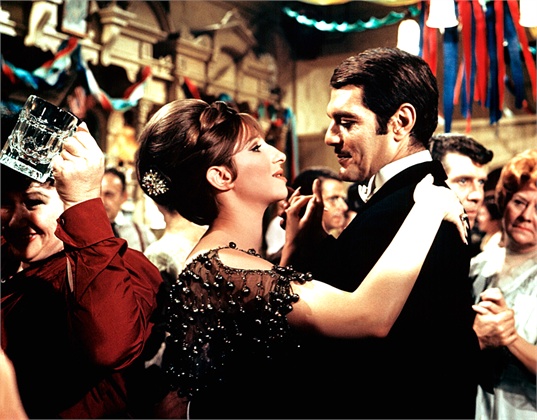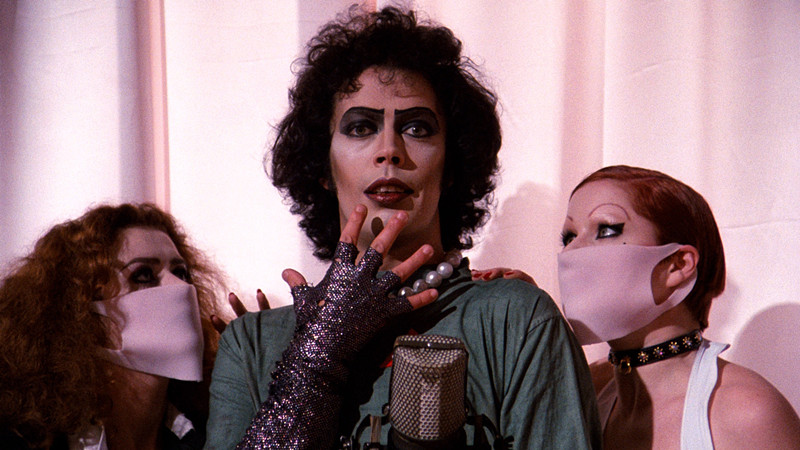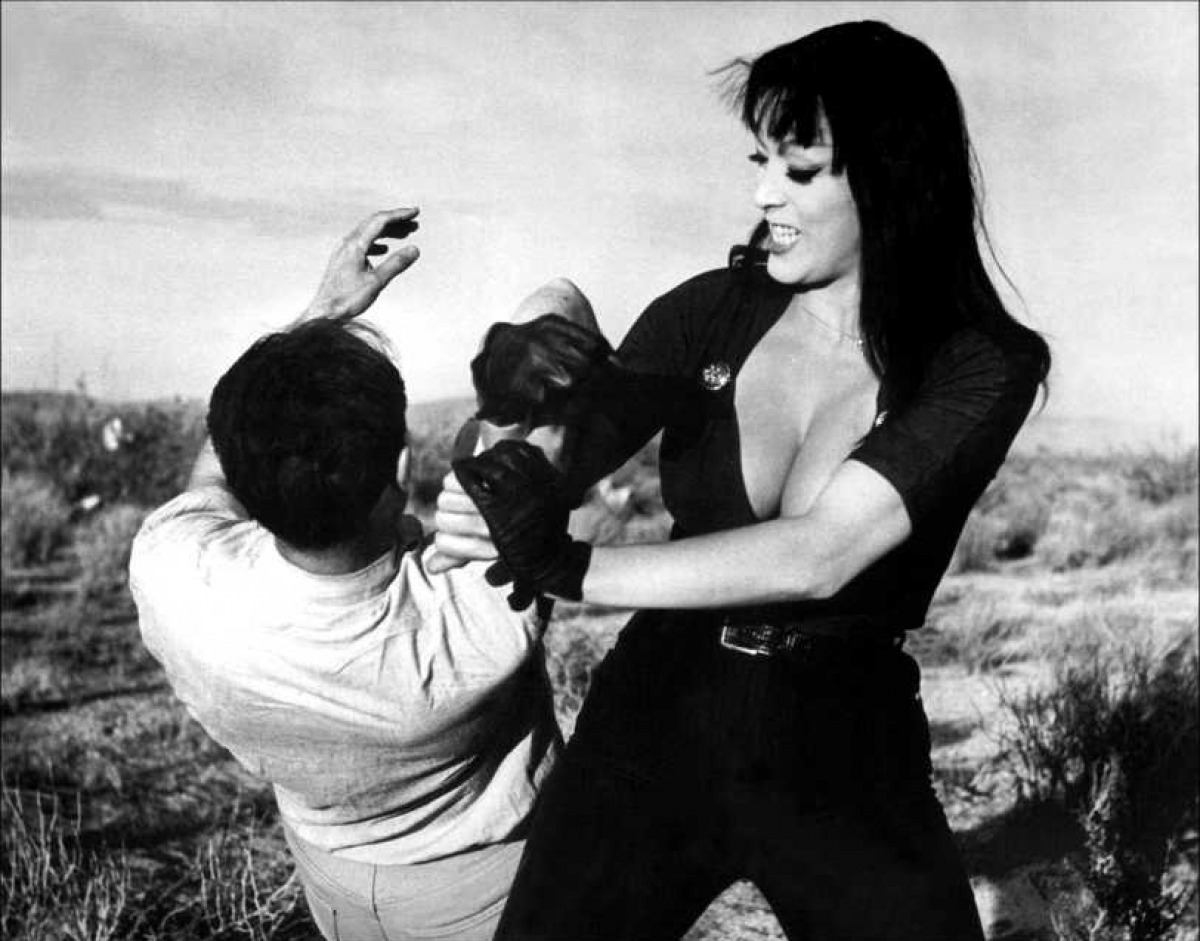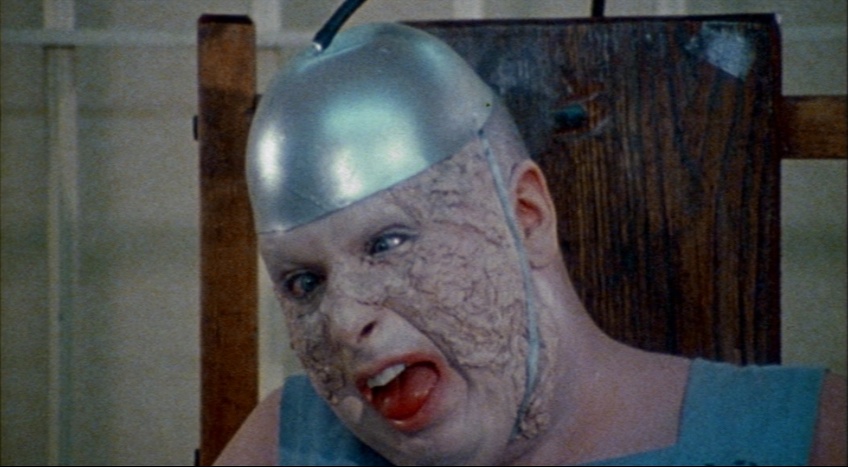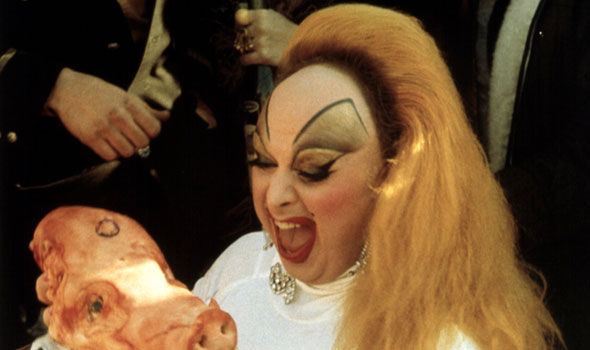17. Imitation of Life (Dir. Douglas Sirk, 1959)
Lora Meredith (Lana Turner) is a single mother and an unsuccessful actress. One day while at the beach with her daughter, Susie (later portrayed by Sandra Dee), Lora meets a black woman, Annie Johnson (Juanita Moore), and Annie’s daughter, Sarah Jane (later portrayed by Susan Kohner). The friendship between Lora and Annie turns professional as Annie agrees to work for Lora for free (while Lora focuses on her career). Tensions mount as their daughters blossom into adulthood, resulting in problems for Sarah Jane, who just wants to “pass” as a white girl.
Imitation is aided by the artificial glamour of old Hollywood, embodied by Lana Turner, and the bubble gum teen generation, embodied by Sandra Dee. Even though the “passing” plot line is more intriguing than that of Lora and Susie, the film grasps onto all of its artificiality in order to present an over-the-top melodrama filled with exaggerated reactions and Lana Turner’s gorgeous gowns.
16. Carrie (Dir. Brian De Palma, 1976)
Carrie White (Sissy Spacek) is an awkward teenager who doesn’t fit in with the other girls in her class. Carrie’s reaction to her first period (which she mistakenly believes is a sign that she is dying) results in a cruel reaction from her classmates, who torture her with tampons and sanitary pads. While Margaret White (Piper Laurie) punishes her daughter for becoming a woman, Coach Collins (Betty Buckley) punishes Carrie’s tormentors with a week of detention, leading one of the girls, Chris (Nancy Allen), to plot her revenge against Carrie.
De Palma’s provocative adaptation of Stephen King’s novel is his crowning masterpiece. It uses its melodramatic score and his signature camera angles to create a sympathetic coming of age film, only to pull the rug from under you during the last act. The actresses are amazing, but Piper Laurie is the epitome of excessive melodrama. Her Bible-thumping, cape-wearing Margaret White is so delicious that she seems more like a parody of a mother than an actual mother.
15. The Gang’s All Here (Dir. Busby Berkeley, 1943)
Eadie Allen (Alice Faye) falls for Andy Mason (James Ellison) while she is performing her nightclub act in New York. The two spend the night together before Andy is shipped off to serve in the war. When Andy returns home, his father, A.J. Mason (Eugene Pallette), plans to throw him a party that includes acts by Eadie and the fiery Dorita (Carmen Miranda). The lovers cross paths again, only to find that Andy is actually engaged to Sheila (Vivian Ryan).
The melodramatic “boy-meets-girl” plot is nothing more than an excuse to showcase Berkeley’s dance numbers, which are filled with suggestive symbolism (the bananas, strawberries, and feet in “The Lady in the Tutti Frutti Hat” represent intercourse, lesbianism, and foot fetishization). Carmen Miranda is the true star of the film , exploiting her thick accent, zany outfits, and androgynous features. She carries the film through its zany plotlines and elaborate dance numbers, all the while sporting fruity hats.
14. Valley of the Dolls (Dir. Mark Robson, 1967)
Three women – Neely O’Hara (Patty Duke), Jennifer North (Sharon Tate), and Anne Welles (Barbara Parkins) – do anything it takes to rise to the top, including taking prescribed barbiturates (aka “dolls”). Their meteoric (and occasionally mediocre) rises are marked by infidelity, nude “arthouse” films, disease, abortion, suicide, nervous breakdowns, mental institutions, and a quiet stroll in the woods.
Based on Jacqueline Susann’s novel of the same name, Mark Robson’s dramatic film boasts performances by actresses who turn serious material into camp. Duke takes the cake as Neely, who blurts the famous line, “Sparkle, Neely! Sparkle!” and shrieks at God when she realizes she is alone. Its over-the-top excess proved to be a failure with the critics, but its embrace by the gay community revealed its true camp potential.
13. Funny Girl (Dir. William Wyler, 1968)
Fanny Brice (Barbra Streisand) reflects on her rise to fame with the Ziegfeld Follies. Her zany humor and wisecracking personality make her an instant hit with audiences, and she soon becomes involved with the wealthy Nicky Arnstein (Omar Sharif). Their relationship is fruitful until financial troubles hinder Nick’s ability to be the breadwinner in the family, causing a rift in their marriage.
Wyler’s adaptation of the Broadway play turned its central star into a Hollywood celebrity. Streisand’s unique look challenged the aesthetics of beauty, while her zany dialogue created a fun and campy depiction of the legendary Brice. Armed with a fur coat and a “Hello, gorgeous,” Babs secured her camp status by becoming a role model for many straight women and a queer icon for many gay men. And let’s not forget the iconic song “Don’t Rain on My Parade.”
12. The Rocky Horror Picture Show (Dir. Jim Sharman, 1975)
Brad Majors (Barry Bostwick) and Janet Weiss (Susan Sarandon) take shelter in a nearby castle where they meet the androgynous Dr. Frank N. Furter (Tim Curry) and his slew of henchmen. While Frank N. Furter is on the brink of creating his ideal man, Frank’s servants, Magenta (Patricia Quinn) and Riff Raff (Richard O’Brien), are plotting a coup to take the spaceship back to their home planet.
Rocky Horror pays homage to campy B-movies (especially horror and science fiction). From the opening image of disembodied lips to its grand finale against the backdrop of an RKO logo, Rocky Horror’s campy aesthetic and attack on wholesomeness has been met by legions of fans who shadow cast the film during its endless midnight screenings.
11. Faster, Pussycat! Kill! Kill! (Dir. Russ Meyer, 1965)
Three go-go dancers search for action and adventure as they kill a man, kidnap his girlfriend, and try to steal a pile of money from a decrepit old man. Russ Meyer’s jigglefest features Tura Satana and Haji in a mixture of titillation and violence. Satana karate chops the scenery with her long hair, black jumpsuit, androgynous features, and exposed cleavage. It is a film that excels at exploitation and camp, knowing how to tap into its niche demographic.
10. Female Trouble (Dir. John Waters, 1974)
Dawn Davenport (Divine) is a rebellious teenager who only wants one thing out of life: cha-cha heels (black ones). Here parents’ inability to pony up the money for the shoes lead to Dawn’s life of crime, which includes stealing TVs, becoming a prostitute, and getting her hair done at The Lipstick Beauty Salon. When her unique look catches the eye of crime fetishists Donna (Mary Vivian Pierce) and Donald Dasher (David Lochary), Dawn becomes more hell bent on pleasing them with her excessive behavior.
It is a vehicle for Divine to showcase her talents and her ability to emulate the icy stare of Elizabeth Taylor. The film’s quotable dialogue and Divine’s dedication to the role (including injecting real liquid eyeliner into her veins) parody melodrama and exploitation in such a delectable manner that you can’t wait to see what she gets into next.
9. Pink Flamingos (Dir. John Waters, 1972)
Divine (played by herself) is the filthiest woman alive, but her title is challenged by Connie (Mink Stole) and Raymond Marble (David Lochary), two “jealous perverts” who will stop at nothing to prove that they deserve the title (including kidnapping/impregnating young women and selling their babies to lesbian couples). The rivalry between the two leads to anthropomorphized furniture, bowel movements, and a trial regarding “assholism.”
Waters’ film is considered by many to be his masterpiece. It is an “experiment in bad taste,” inverting the idea of glamour by playing with Divine’s exhibitionism and unconventional drag. Her glamorous tracking shots (filled with unsuspecting onlookers) and cringe-worthy moments (including eating real dog feces) made her a camp icon and a cult figure for the ages.
